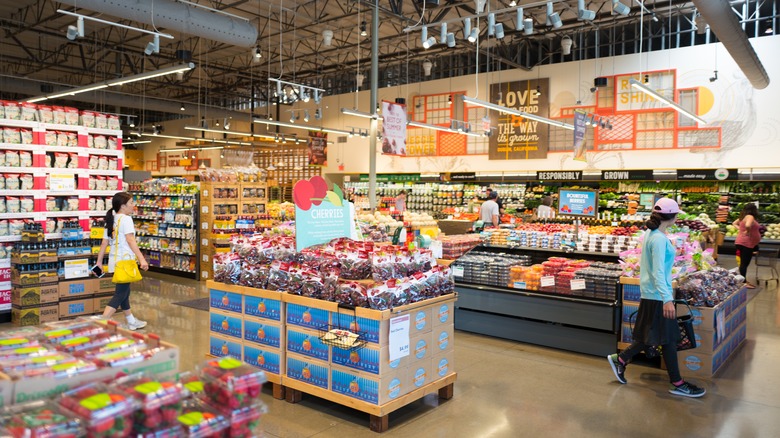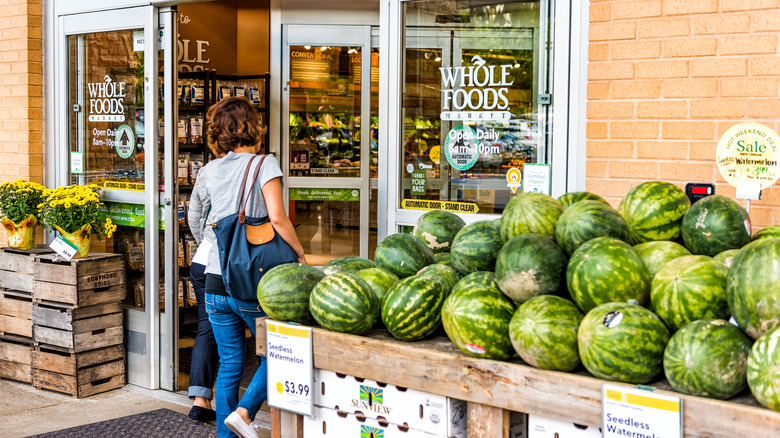These Are The Only 6 States That Don't Have A Whole Foods
With over 500 stores, Whole Foods Market is the largest natural and organic food supermarket chain in America. Since its founding in 1980, Whole Foods has become the best store for organic shopping. Its name has become synonymous with natural foods and high-quality products, drawing health-conscious consumers nationwide. While Whole Foods has expanded across most of the United States, there are still six states without a store: Alaska, Delaware, North Dakota, South Dakota, Vermont, and West Virginia. Despite Amazon's acquisition in 2017 and the opening of more than 60 new stores, these states remain without a location.
California leads the country with 95 Whole Foods locations, accounting for just under 20% of total stores. Florida and Texas follow, each with around 35 stores. In terms of cities, New York City and Chicago boast the highest number of locations. Whole Foods also has an international presence, with expansions into Canada and the United Kingdom. However, despite this extensive growth, there have been no announced plans to open new locations in those six states. This has left many residents in those areas wondering if and when they will get their own Whole Foods Market.
Why these states don't have a Whole Foods
Whole Foods has clearly laid out its guidelines for retail locations, which typically include a population of at least 200,000 and specific demographics, such as a significant population of college-educated people. Alaska's distance from the contiguous U.S., low population density, and low percentage of college-educated adults may affect the chain's decision to expand there, though Anchorage's mayor told the Anchorage Daily News that he envisions one coming to the city. Similarly, the Dakotas and West Virginia have lower population density and/or a low number of college-educated adults, potentially making them less appealing for retail stores. Delaware almost had a Whole Foods in the early 2010s, but a planned location in Northern Wilmington was rejected, leading the chain to open a store instead just over the Pennsylvania border. Vermont's lack of Whole Foods may be due to community resistance and local competition.
While these factors collectively explain the absence of Whole Foods in these six states, it's clear that the chain's criteria for new locations play a significant role. Despite this, the growing demand for organic food leaves the door open for future expansion. Until then, residents of the states may need to cross borders, find another grocery chain for organic shopping, or rely on alternatives like Sprouts or local co-ops to meet their organic and natural food needs.

